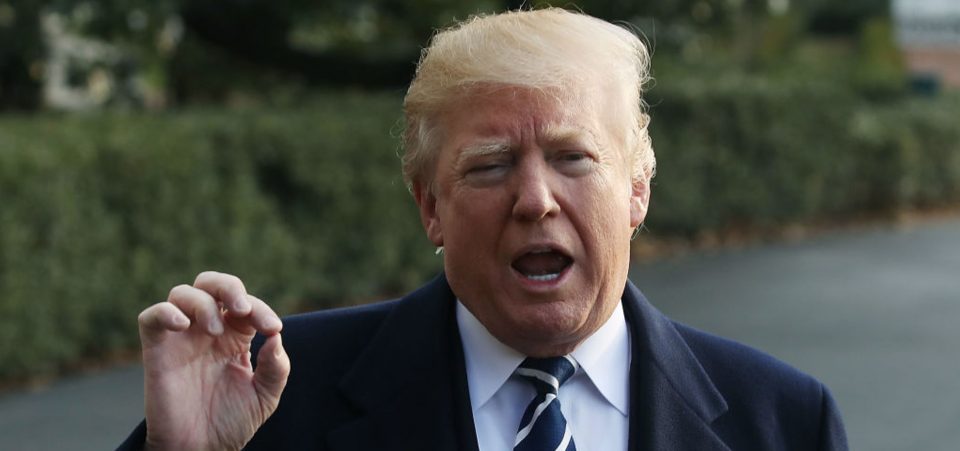Footage of Apparent No-Go Zones in France Settling the Debate
Fresh new footage has surfaced suggesting that President Donald Trump was right about no-go zones in certain pockets in Europe. As more evidence emerges over time, Trump’s perspective is becoming increasingly difficult to ignore.
The new video was posted on Twitter and disseminated widely by conservative-right social media. It shows French police arresting a drug dealer in a Paris suburb parking lot while wearing burkas. Just as telling, a third police officer is seen rushing toward the suspect and ushering him out quickly, while the videographer yells obscenities in the background. Watch.
ATTENTION ! la police est obligée de mettre des burqas pour interpeller des dealers sous les cris outragés des MUZZS ! RT???????????? pic.twitter.com/hBKugLsHtc
— Lacrimosa… (@keulu123) November 30, 2017
The clear sense of operational urgency is unmistakable. We doubt any police officers chatted beside their police vehicles or causally interviewed witnesses following the arrest. It definitely seemed as though the police wanted to get in and out as quickly as possible before the environment turned hostile. That’s exactly what happened, judging by the shouting voices immediately upon arrest.
Another important point about the arrest is that burkas are actually illegal in France. The Loi interdisant la dissimulation du visage dans l’espace public, or ban on face coverings, has been in place since April 11, 2011. It targets helmets, scarves, and masks, but is most notably aimed at full-length religious garb like the burka. The law imposes fines of €150 and/or a mandatory citizenship education program enrollment for offenders. Penalties for forced coercion are even greater—a €30,000 fine and one-year imprisonment. (Source: “LOI n° 2010-1192 du 11 octobre 2010 interdisant la dissimulation du visage dans l’espace public,” LegiFrance, October 11, 2010.)
While the arrest in itself doesn’t provide absolute proof of the presence of a no-go area, it’s pretty darn close. It’s possible, for example, that the arrest was part of a sting operation in which burkas were used to get close to the suspect. That would make this arrest case-specific and not necessarily indicative of normal arrests in the suburb. This point is unclear in the tweet.
However, the fact that police could even get close enough to “blend right in” is troubling in its own right. It means that French law is routinely disregarded by large segments of the population. It suggests that some districts may be turning into ghettos, where important French values such as La Laïcité are under siege. The bottom line: If LOI n° 2010-1192 were strictly enforced in this area, police wouldn’t have been able to use the burka as cover.
Ultimately, we’ll leave it to our readers to decide whether or not this incident proves the existence of a no-go area in France (and Europe, by extension). But the necessity of speed and the disguise used seem to suggest so, from our perspective.
Taken in context with other events around Europe, this assertion only becomes stronger.
Genesis of the Debate
If you recall, the whole debate about no-go zones erupted in December 2015, when presidential-hopeful Donald Trump suggested that parts of Britain had become Muslim no-go zones in the U.K. The London Met Police responded decisively, firmly stating that Trump “could not be more wrong.” (Source: “Donald Trump finds a European ally for his claim about ‘no-go zones’ in Europe,” The Washington Post, April 2, 2016.)
Whether Trump was correct about Islamic no-go zones in the U.K. is a matter of conjecture. As a blanket statement, it might go too far. But clearly, the increasing amount and scope of violent assaults seem to suggest it’s heading in that direction. For example, acid attacks in London have increased to 454 in 2016, up from 261 in 2015 and 166 the year before. These types of attacks were virtually non-existent a decade ago. (Source: “Fear stalks London as city sees 454 acid attacks in one year,” The Times of India, December 3, 2017.)
Furthermore, countries like Sweden are facing undeniable no-go zone trends. Not only has Swedish National Police Commissioner Dan Eliasson admitted to 61 no-go zones in Sweden, but over 80% of the Swedish police force is thinking about quitting because of workplace hazards. In fact, on average, three police officers quit every day. (Source: “Are There No-Go Zones in Sweden? Police Identify Dozens of ‘Vulnerable Areas’ Rife with Criminality,” Newsweek, June 21, 2017.)
Complaints range from widespread disrespect to dangers associated with entering certain city districts. As police Sargeant Peter Larsson explains it, “violence against us in the police and the paramedics and firefighters, has become much worse. We’re talking about stone throwing, violence, fires. It has become much worse in recent years.” (Source: “80 Per Cent Of Swedish Police Consider Quitting Over Migrant Danger,” Breitbart, September 20, 2016)
Our Verdict
The accounts above barely scratch the surface. The mounting evidence regarding the presence of no-go zones is getting close to conclusive. The latest video showing police in burkas arresting a suspect does not end the debate, but it does add another level of credibility to the argument that deniers can’t possibly ignore; that no-go zones exist not only in France but in other parts of Europe.
That would make Donald Trump right on the issue, even if the public weren’t ready to accept the answer.






